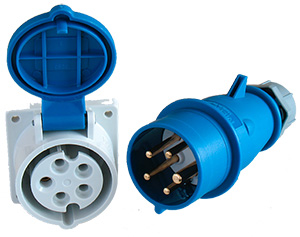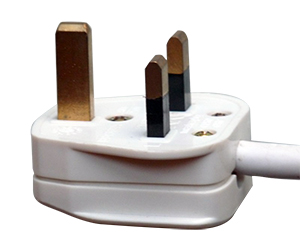How to decide on Single Phase or 3 Phase equipment

You may have seen that certain catering equipment comes in different versions or options - Single Phase or 3 Phase, you might have also seen the words "13 Amp" and "Hardwired". It can get a little confusing, and it is vitally important that you choose the right machine for you and your business. Getting it right first time prevents you wasting time and money, as well as avoiding downtime in your kitchen.
Single Phase
At home, a single phase supply is something that we're all used to, it is the standard electricity supply for almost all homes and a lot of commercial buildings too. A plug or the wiring for a single phase appliance will be typically 1 Live wire, 1 Neutral wire and usually 1 Earth wire.
A single phase appliance is usually fitted with a standard 13 amp plug, but can also be seen with 20 amp plus or hard wired - this means the appliance is wired into a dedicated fused switch or isolator on the wall and requires installation by an electrician.
Single Phase can also be sometimes labelled as:
- 1 Phase
- 1 PH
- 1N
3 Phase
Three phase is mostly seen in commercial environments, and is designed to be used with appliances that need additional power, and a consistent amount of power to operate. They can come as a hard wired installation, which means the appliance is wired into a dedicated fused switch on the wall and requires installation by an electrician. Or, they are sometimes fitted with large commando plugs with 5 pins - these are industrial graded plugs and sockets designed for durability and can safely transfer large amounts of power - these just plug in, if you have the socket and the capacity for the equipment.
If you are adding additional equipment, it's worth checking with an electrician that your wiring can handle the additional load. If you're replacing equipment, you can check the electrical rating of your older appliance before purchasing your replacement.
This type of supply has an increased voltage, and you will need a 3 phase supply pre-existing or installed to be able to run three phase equipment. A lot of commercial buildings are set up with these supplies already, or it may be possible for a 3-phase electrical supply installed by your energy provider, however it's worth checking this first as it can be expensive depending on your location.
3 Phase can also be sometimes labelled as:
- 3 PH
- 3N


Hard Wired
Both Single Phase and Three Phase appliances can sometimes be found in a hard wired configuration. This means that they may come with a cable and no plug, or no plug at all - these require installation from an electrician. These types of equipment are usually wired into a fused switch.
Other useful information
There are a lot of different terms and abbreviations used for certain items of electrical catering equipment, and it can sometimes make things confusing or hard to understand. Here's some of the common ones to make things simpler.
How do I find out which type of supply I have?
If you already have a 3 phase appliance, then you have a 3 phase supply. Alternatively, an electrician will be able to have a look and let you know.
Can I put a regular plug on my 3 phase / Hard Wired appliance and plug it in?
No - Doing this is dangerous and may cause serious problems with your machine, as well as invalidating any warranty. Due to the way 3 phase and hardwired equipment works, this is not suitable.
Can I put a regular plug on my Single phase / Hard Wired appliance and plug it in?
If your equipment has no cable or plug fitted, this usually means it is hard wired. Check the installation manual or documentation. Just adding a plug is dangerous and may cause serious problems with your machine, as well as invalidating any warranty.
What can I do if i've ordered the incorrect power type?
You won't be able to use the equipment - it is often possible to have a 3 phase supply installed, but the cost and timescale for this depends on your local electricity supply.
Why is new appliance causing the circuit to trip off?
This could be an overloaded circuit, if you have added some new equipment or replaced something with a higher power rating. It is also possible that there's a fault with the equipment. Check the power ratings and ensure that you are not overloading the circuit by consulting the user manual first.
Amps (A)
All electrical appliances have an Amp rating (usually labelled as a number followed by "A", for example "10A". It is a measurement of electric current flow through a wire. A common Amp rating for smaller appliances is 13A, one of the most common ratings you'd see on a standard household plugs, you can also sometimes see 20A rated equipment.
You can also calculate the amps a particular piece of equipment will require by dividing the power rating (Watts) by the Voltage (Volts)
Total Power Rating (W / kW)
This means the amount of power the appliance uses when turned on and running to its maximum output. This is given in Watts (W) or kilowatts (kW). The lower the power rating, the less power it is using. For example, a large Combination Oven could use 65kW, and require a 3 phase supply, and something like a Lincat EB3FX Water Boiler uses only 3kW on a single phase supply.
Supply Voltage (V)
You'll typically see a range of around 220V - 240V on a lot of single phase catering products, however if the product is three phase, you will likely see a lower rating in a slightly different format. Some international products may display 2 sets of voltages, one for the UK and one for the lower 110V voltage standard.
Still unsure?
If you're still not sure on the right option for you, get in touch with our team and we'll be happy to help you and ensure you get the correct catering equipment.



